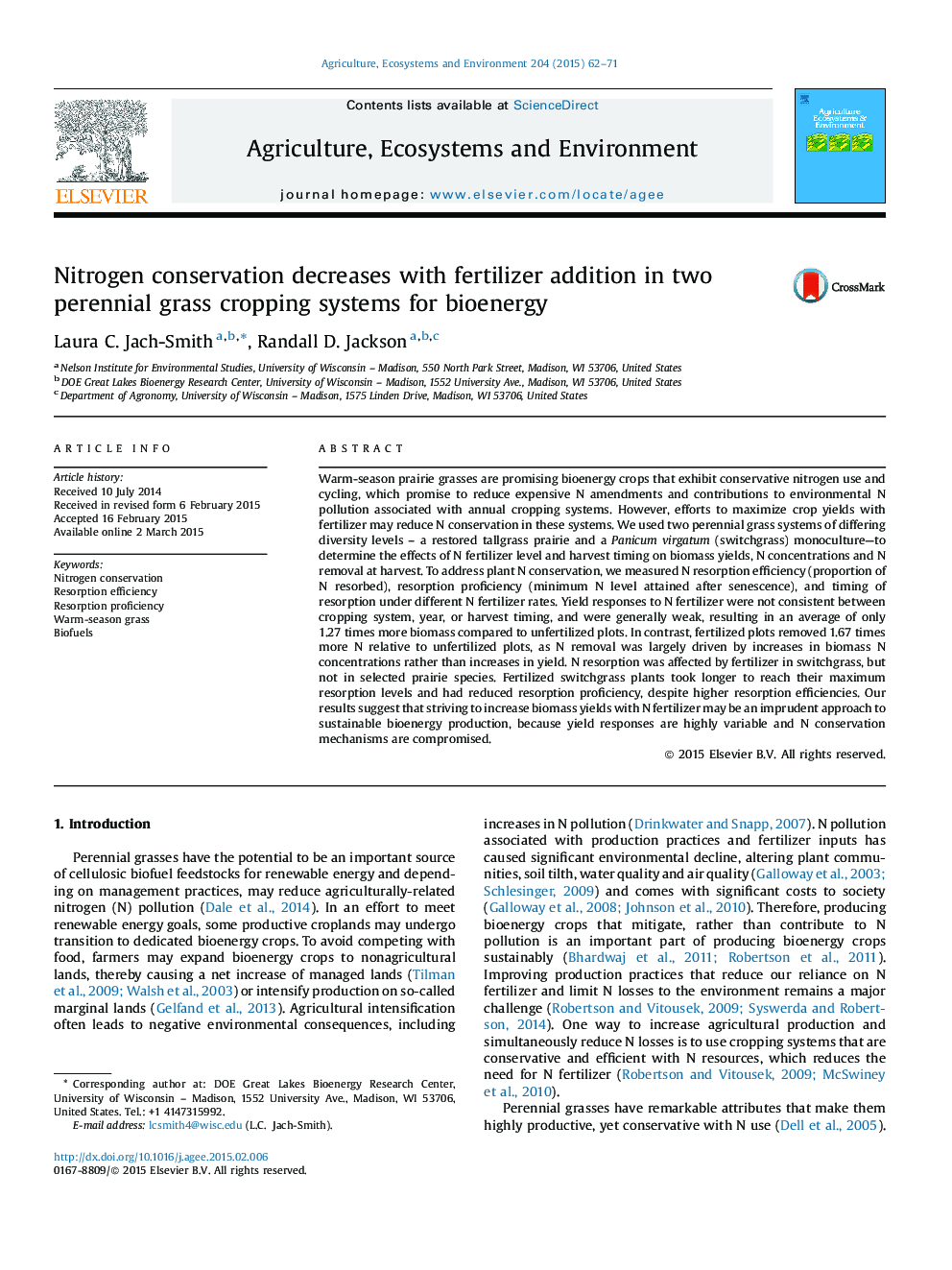| کد مقاله | کد نشریه | سال انتشار | مقاله انگلیسی | نسخه تمام متن |
|---|---|---|---|---|
| 2413794 | 1552048 | 2015 | 10 صفحه PDF | دانلود رایگان |
• We measured N fertilizer responses in two perennial grass systems for bioenergy.
• Yield responses to N fertilizer additions were highly variable and generally weak.
• Fertilized treatments removed a disproportionate amount of N relative to yields.
• N resorption was affected by fertilizer in switchgrass, but not prairie species.
• N resorption in fertilized switchgrass showed a reduced ability to conserve N.
Warm-season prairie grasses are promising bioenergy crops that exhibit conservative nitrogen use and cycling, which promise to reduce expensive N amendments and contributions to environmental N pollution associated with annual cropping systems. However, efforts to maximize crop yields with fertilizer may reduce N conservation in these systems. We used two perennial grass systems of differing diversity levels – a restored tallgrass prairie and a Panicum virgatum (switchgrass) monoculture—to determine the effects of N fertilizer level and harvest timing on biomass yields, N concentrations and N removal at harvest. To address plant N conservation, we measured N resorption efficiency (proportion of N resorbed), resorption proficiency (minimum N level attained after senescence), and timing of resorption under different N fertilizer rates. Yield responses to N fertilizer were not consistent between cropping system, year, or harvest timing, and were generally weak, resulting in an average of only 1.27 times more biomass compared to unfertilized plots. In contrast, fertilized plots removed 1.67 times more N relative to unfertilized plots, as N removal was largely driven by increases in biomass N concentrations rather than increases in yield. N resorption was affected by fertilizer in switchgrass, but not in selected prairie species. Fertilized switchgrass plants took longer to reach their maximum resorption levels and had reduced resorption proficiency, despite higher resorption efficiencies. Our results suggest that striving to increase biomass yields with N fertilizer may be an imprudent approach to sustainable bioenergy production, because yield responses are highly variable and N conservation mechanisms are compromised.
Journal: Agriculture, Ecosystems & Environment - Volume 204, 1 June 2015, Pages 62–71
